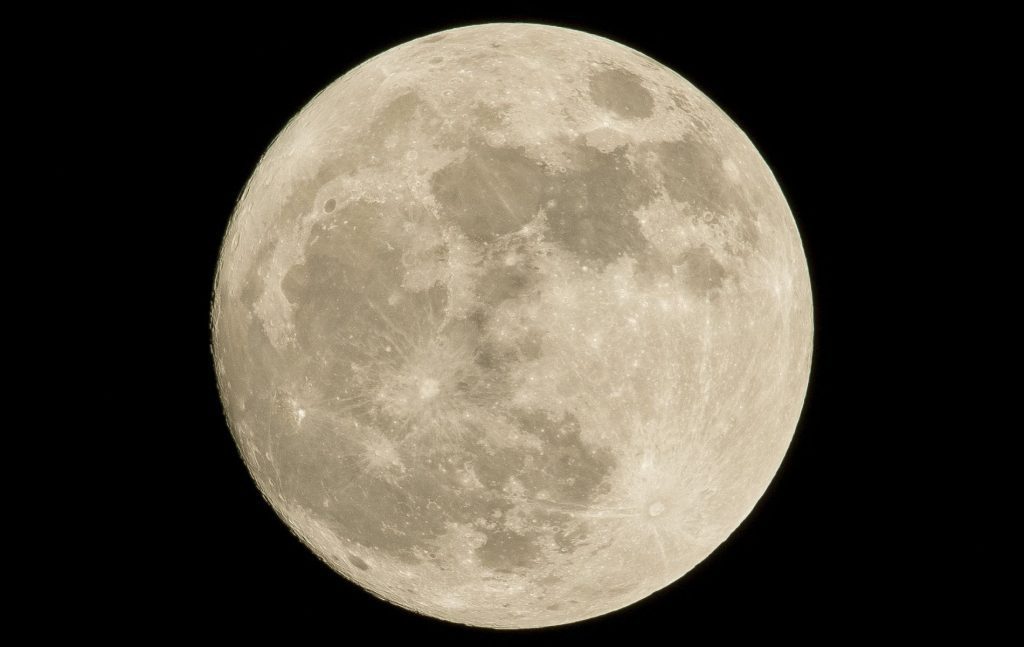Once a giant object collided directly with the young Earth. The largest piece that broke off formed our moon. But when exactly that happened remained somewhat of a mystery for a long time. New research sheds light on this issue: The Moon has been around for 40 million years longer than previously thought.
This is the conclusion research To the crystals that Apollo astronauts brought from the Moon in 1972. This means that the Moon is at least 4.46 billion years old. “These crystals are the oldest known solids that formed after the massive impact. Because we know the age of these crystals, they serve as an anchor for the Moon’s timeline,” says Philip Heck, a professor at Harvard University. University of Chicago.
Cooling ocean magma
When a Mars-sized body collided with the Earth to form the Moon, the energy from the collision melted the rocks that would eventually form the Moon’s surface. “When the surface was too molten, the zircon crystals couldn’t form or survive. So all the crystals on the Moon’s surface must have formed after the Moon’s magma ocean cooled,” Heck explains. “Otherwise they melted and their chemical signature was destroyed.”
Since the crystals formed only after the magma cooled, the age of the zircon crystals reveals the minimum age of the Moon. This has been estimated previously, but this new study is the first to use an analysis method called atomic probe tomography, which can more accurately determine the age of moon crystals.
A very special pencil sharpener
“In atomic probe tomography, we start by sharpening a piece of lunar dust until a very sharp point is created. “For this we use a focused ion microscope, which is kind of a very modern pencil sharpener,” explains researcher Jennica Greer. “Then we used ultraviolet lasers to vaporize atoms from the surface of that point. The atoms then move through the mass spectrometer, and how fast this happens tells us how heavy they are, which tells us what these atoms are made of.

In this way, atom by atom is examined, showing how many atoms in the zircon have undergone radioactive decay. If atoms have an unstable configuration of protons and neutrons in their nuclei, decay occurs. Then you lose some of these protons and neutrons and turn into different elements. For example, uranium decays into lead. Scientists have discovered how long this process takes. They can then determine the age of the sample based on the proportion of uranium and lead atoms (isotopes) in the sample.
Just an hourglass
“Radiometric dating is a bit like an hourglass,” Heck says. “In an hourglass, sand flows from one cup to another. The amount of time that has passed is evident from the amount of sand in the bottom glass cylinder. Radioactive dating works in the same way, except that you count the number of parent atoms and the number of daughter atoms they have transformed into. You can then calculate how much time, because the rate of transformation is known.

Thus, researchers were finally able to find out the age of the Moon. The lead isotope ratio showed that the moon dust is about 4.46 billion years old. So the moon itself is at least old. This is 40 million years older than thought. “It’s great that we’ve been able to prove that this is the oldest piece of the Moon we’ve found so far. It’s a connecting point for many questions about Earth. If you know how old something is, you can estimate much better what happened in history,” Greer says. .
24 hours a day
However, it’s important to know when the Moon formed, Heck says, because “the Moon is an important partner in our planetary system.” It stabilizes the Earth’s rotation axis. It’s why there are 24 hours in a day, and it’s why there are tides. If it were not for the moon, life on Earth would be different. It’s a part of our natural system that we want to understand better, and our study provides another small piece of the puzzle in the whole picture.

“Coffee buff. Twitter fanatic. Tv practitioner. Social media advocate. Pop culture ninja.”











More Stories
Which can cause an increase in nitrogen.
The Central State Real Estate Agency has no additional space to accommodate Ukrainians.
The oystercatcher, the “unlucky national bird,” is increasingly breeding on rooftops.